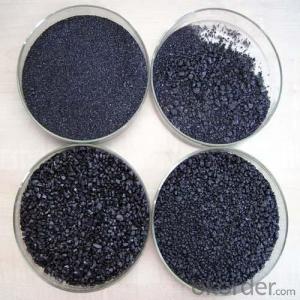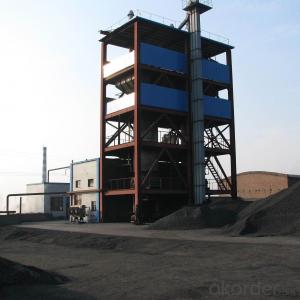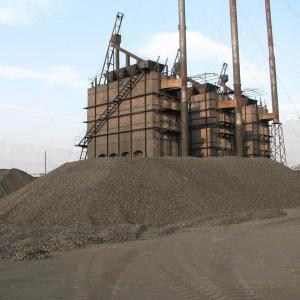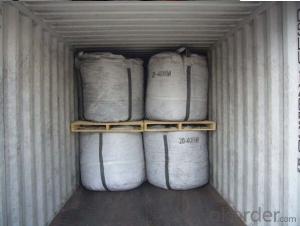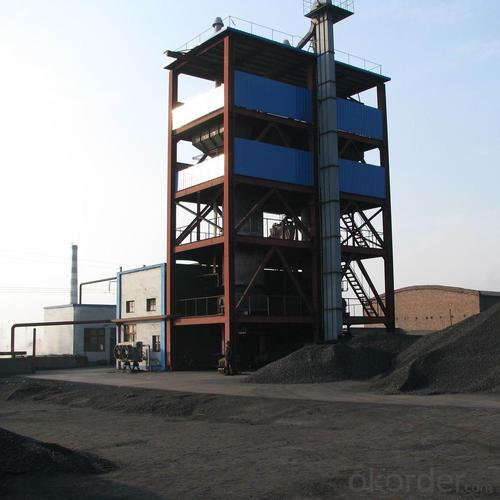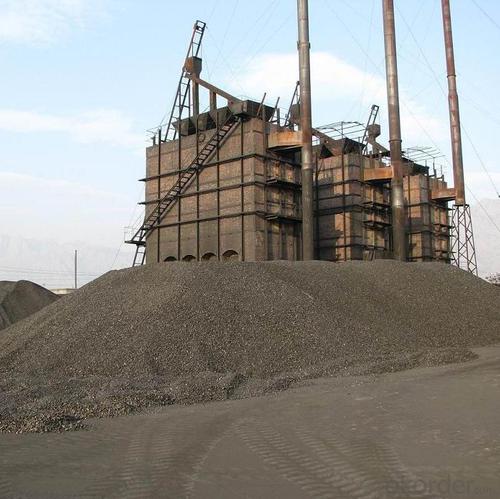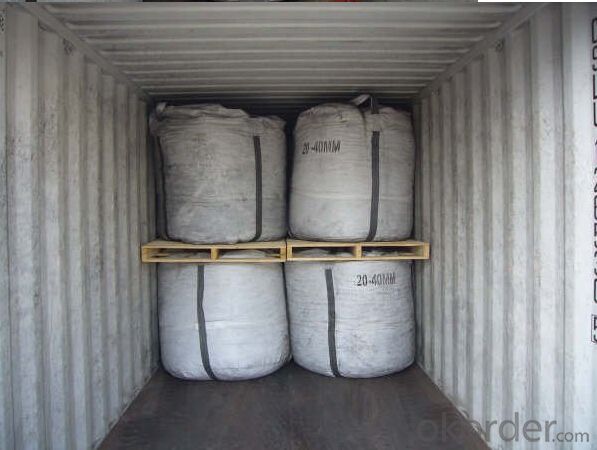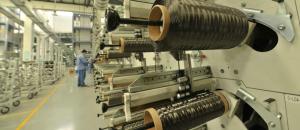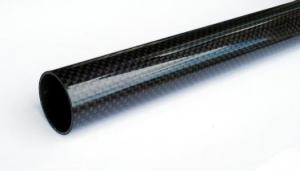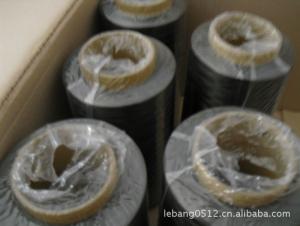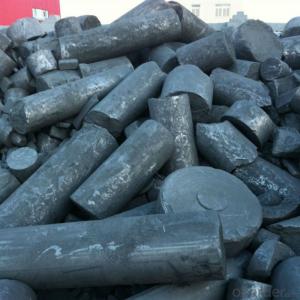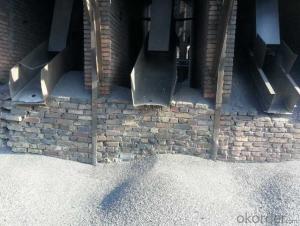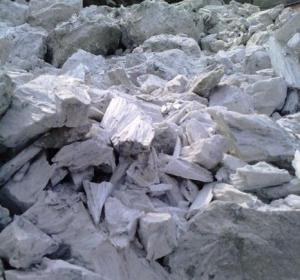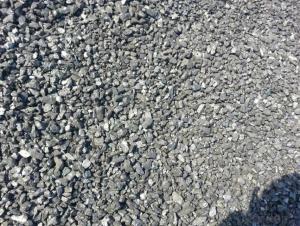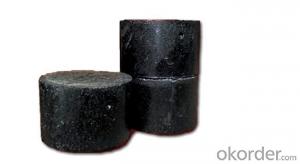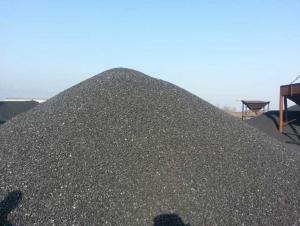Recarburizer Anthracite Coal FC 90-95% for Steelmaking
- Loading Port:
- Tianjin
- Payment Terms:
- TT or LC
- Min Order Qty:
- 20 m.t.
- Supply Capability:
- 10000 m.t./month
OKorder Service Pledge
OKorder Financial Service
You Might Also Like
Quick Details
Place of Origin: Ningxia, China (Mainland)
Application: steel making
Shape: granule
Dimensions: FC90-95%
Product Type: Carbon Additive
C Content (%): 90-95% MIN
Working Temperature: -
S Content (%): 0.5%MAX
N Content (%): -
H Content (%): 0.6%MAX
Ash Content (%): 8.5%MAX
Volatile: 2%MAX
ADVANTAGE: low ash & sulfur
COLOR: Black
RAW MATERIAL: TaiXi anthracite
Packaging & Delivery
| Packaging Details: | In 1MT plastic woven bag. |
|---|---|
| Delivery Detail: | 30-40DAYS |
Specifications
Recarburizer Anthracite Coal FC 90-95% for Steelmaking
Carbon Additve low Ash,S,P
FC>95% ASH<4% S<0.3%
It is made from TaiXi anthracite.
instead of pertrol coke reduce the cost
Structure
Recarburizer Anthracite Coal FC 90-95% for Steelmaking
Shape: granule
Dimensions: FC90-95%
Product Type: Carbon Additive
C Content (%): 90-95% MIN
Working Temperature: -
S Content (%): 0.5%MAX
N Content (%): -
H Content (%): 0.6%MAX
Ash Content (%): 8.5%MAX
Volatile: 2%MAX
ADVANTAGE: low ash & sulfur
COLOR: Black
RAW MATERIAL: TaiXi anthracite
Feature
Recarburizer Anthracite Coal FC 90-95% for Steelmaking
Specifications (%): | ||||||
Grade | F.C | Ash | V.M | Moisture | S | Size |
CR-95 | ≥95 | <4 | <1 | <1 | <0.3 | 0-30mm |
CR-94 | ≥94 | <4 | <1 | <1 | <0.3 | |
CR-93 | ≥93 | <6 | <1 | <1 | <0.4 | |
CR-92 | ≥92 | <7 | <1 | <1 | <0.4 | |
CR-91 | ≥91 | <8 | <1 | <1 | <0.4 | |
CR-90 | ≥90 | <8.5 | <1.5 | <2 | <0.4 | |
Image
Recarburizer Anthracite Coal FC 90-95% for Steelmaking
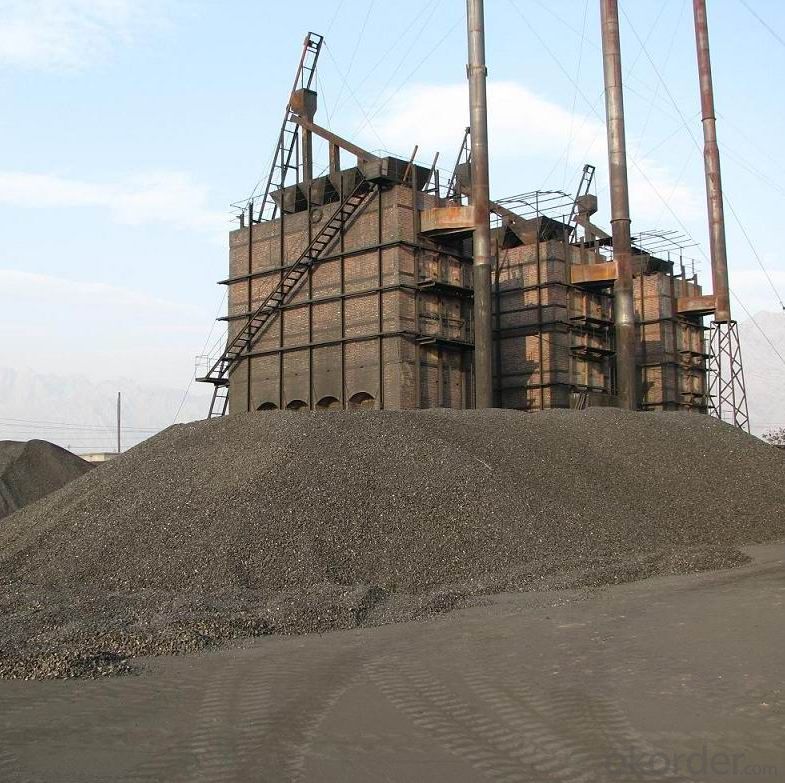
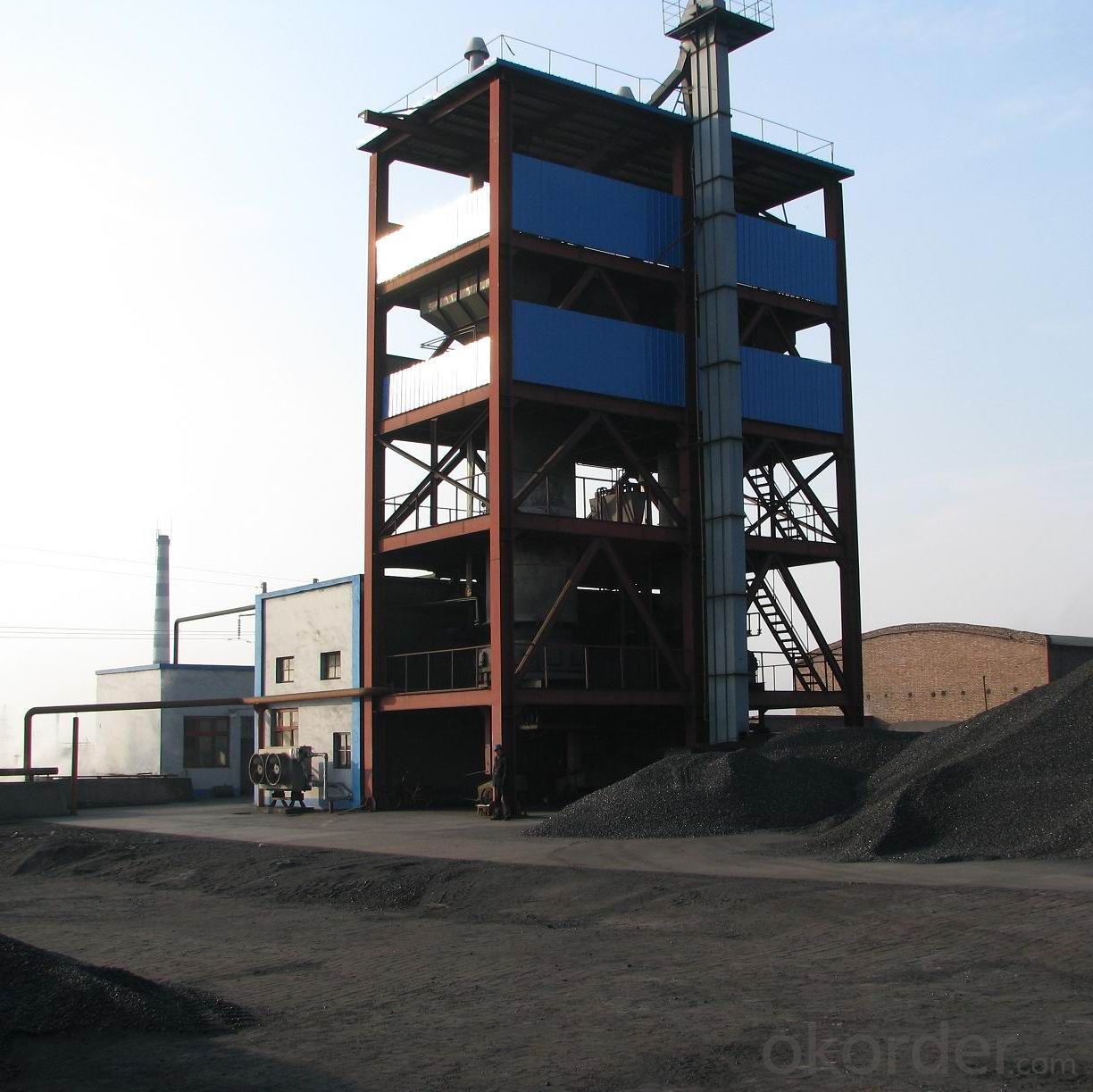
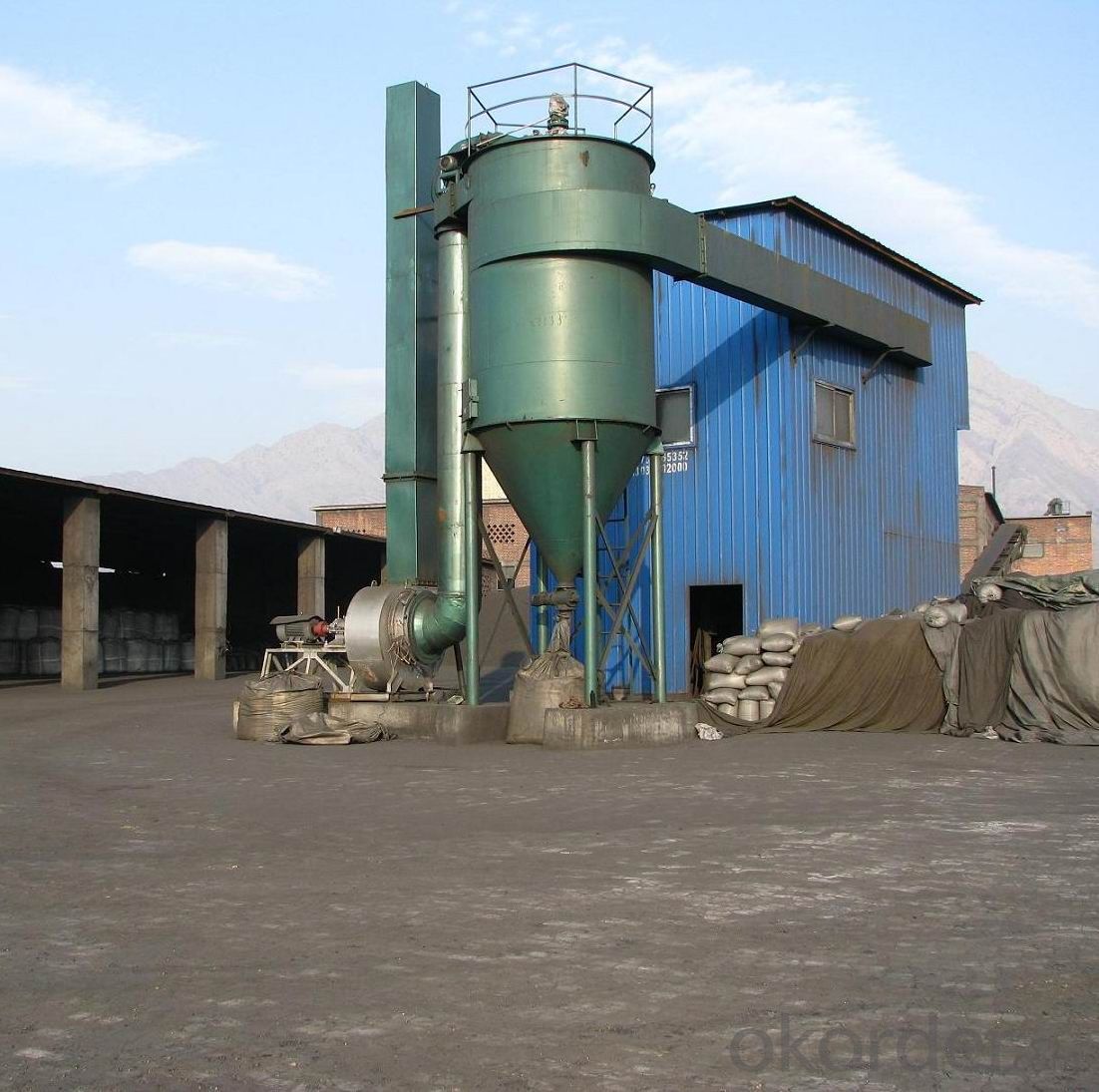
FAQ:
Recarburizer Anthracite Coal FC 90-95% for Steelmaking
Why we adopt carbon additive?
Carbon Additives used as additive in steel making process. It made from well-selected Tai Xi anthracite which is low in content of ash, sulphur, phosphorus, high heat productivity, high chemically activation.
Mainly industry property of it is: instead of traditional pertroleum coal of Carbon Additives, reduce the cost of steelmaking.
Advantage:
Recarburizer Anthracite Coal FC 90-95% for Steelmaking
1.High quality and competitive price.
2.Timely delivery.
3.If any item you like. Please contact us.
Your sincere inquiries are typically answered within 24 hours.
- Q: How does carbon cycle through living organisms?
- The carbon cycle through living organisms involves various processes. It begins with plants absorbing carbon dioxide from the atmosphere through photosynthesis, converting it into organic compounds. These plants are then consumed by herbivores, transferring the carbon to the animal's body. When herbivores are consumed by carnivores, the carbon is transferred again. Eventually, through respiration, carbon is released back into the atmosphere as carbon dioxide. Decomposers break down dead organisms, releasing carbon back into the soil, where it can be used by plants once again. This continuous cycle ensures the flow of carbon through different living organisms.
- Q: What is the greenhouse effect of carbon dioxide?
- The greenhouse effect of carbon dioxide refers to the process by which carbon dioxide (CO2) and other greenhouse gases in the Earth's atmosphere trap heat from the sun and contribute to the warming of the planet. These gases act like a blanket, allowing sunlight to pass through but trapping the heat that is reflected back from the Earth's surface. When sunlight reaches the Earth's surface, it warms the land, oceans, and atmosphere. As the Earth re-radiates this heat back into space, greenhouse gases absorb and re-emit some of this energy, preventing it from escaping into space. This process naturally occurs and is essential for maintaining the Earth's temperature within a habitable range, making life as we know it possible. However, human activities, particularly the burning of fossil fuels such as coal, oil, and natural gas, have significantly increased the concentration of carbon dioxide and other greenhouse gases in the atmosphere. This has intensified the greenhouse effect, leading to a rise in global temperatures, commonly referred to as global warming or climate change. The increased levels of carbon dioxide in the atmosphere result in more heat being trapped, creating a greenhouse effect that amplifies the natural warming process. The consequences of this include rising sea levels, more frequent and severe extreme weather events, changes in precipitation patterns, and disruptions to ecosystems and biodiversity. Addressing the greenhouse effect of carbon dioxide and reducing greenhouse gas emissions is crucial in mitigating the impacts of climate change. Efforts to transition to renewable energy sources, increase energy efficiency, and promote sustainable practices are key in reducing carbon dioxide emissions and combating global warming.
- Q: What are carbon sinks?
- Carbon sinks are natural or artificial reservoirs that absorb and store carbon dioxide from the atmosphere. They play a crucial role in mitigating climate change by reducing the concentration of greenhouse gases in the atmosphere. Carbon sinks can be found in various forms, including forests, oceans, wetlands, and soil. Forests are the largest and most well-known carbon sinks. Through the process of photosynthesis, trees absorb carbon dioxide and convert it into oxygen, storing the carbon in their trunks, branches, and roots. Oceans are also significant carbon sinks, as they absorb about a quarter of the carbon dioxide emitted by human activities. Algae, phytoplankton, and other marine organisms capture carbon through photosynthesis and convert it into biomass. Wetlands, such as marshes and swamps, are another important carbon sink. These areas store enormous amounts of carbon in their vegetation and soil, preventing it from being released back into the atmosphere. Additionally, soil acts as a carbon sink by absorbing and storing carbon through the decomposition of organic matter and the action of microorganisms. Artificial carbon sinks, like carbon capture and storage (CCS) technologies, are being developed to further combat climate change. CCS involves capturing carbon dioxide emissions from power plants and industrial facilities and storing them underground or repurposing them for other uses. While these technologies are still in the early stages, they have the potential to significantly reduce carbon emissions and help stabilize the climate. Overall, carbon sinks are essential for maintaining the balance of carbon dioxide in the atmosphere and preventing its accumulation, which would contribute to global warming. Preserving and restoring natural carbon sinks, such as forests and wetlands, is crucial for mitigating climate change, while developing and implementing artificial carbon sinks can further aid in reducing greenhouse gas emissions.
- Q: What are the consequences of increased carbon emissions on public health systems?
- Public health systems are significantly affected by the increase in carbon emissions. One of the main consequences is the worsening of respiratory diseases like asthma, COPD, and bronchitis. These conditions are aggravated by the presence of fine particulate matter (PM2.5) and ground-level ozone, both of which can deeply penetrate the respiratory system. Furthermore, higher levels of carbon emissions are linked to a higher occurrence of cardiovascular diseases. The release of fine particulate matter and other pollutants from carbon-emitting sources can enter the bloodstream, leading to inflammation, oxidative stress, and the development of atherosclerosis. This can eventually result in heart attacks, strokes, and other cardiovascular complications. Additionally, the spread of infectious diseases is also influenced by climate change, which is driven by carbon emissions. The rise in temperatures and changes in precipitation patterns create favorable conditions for disease-carrying vectors like mosquitoes and ticks. This facilitates the transmission of diseases such as malaria, dengue fever, Lyme disease, and Zika virus. Moreover, extreme weather events and natural disasters associated with climate change can disrupt healthcare infrastructure and limit access to essential services, further impacting public health systems. Moreover, mental health is affected by the increase in carbon emissions as well. The degradation of the environment caused by carbon emissions contributes to feelings of anxiety, stress, and depression, often referred to as eco-anxiety or climate grief. The loss of biodiversity, destruction of natural habitats, and the general uncertainty about the future can have harmful effects on individuals and communities, requiring additional resources and support from public health systems. In conclusion, the consequences of increased carbon emissions extend far beyond the environment and have a profound impact on public health systems. They contribute to the prevalence of respiratory and cardiovascular diseases, facilitate the spread of infectious diseases, and affect mental health. It is crucial to address carbon emissions and adopt sustainable practices to mitigate these consequences and protect the well-being of individuals and communities.
- Q: What does carbon nanotubes (5,5) in (5,5) mean?
- 1. will be assumed as the corresponding nanotube (cut after) / graphene planar monolayer of carbon atoms (Figure 1)For hexagonal packing, marking the best method for the definition of the two unit vector (unit vector), the A1 and A2 arrow.A1 and A2 interval is 60 degrees.2. (5,5) refers to 5<a1>+5<a2>, (note that is a vector addition) more widely expressed as:(m, n) = m*<a1> + n*<a2>;
- Q: How is activated carbon produced?
- Activated carbon is produced through a process called activation, which involves heating carbon-rich materials, such as wood, coal, or coconut shells, at high temperatures in the absence of oxygen. There are two main methods of activation: physical activation and chemical activation. In physical activation, the carbon-rich material is first carbonized by heating it to a high temperature. This creates a carbonized char with a high carbon content. The char is then treated with an oxidizing gas, such as steam or carbon dioxide, at temperatures between 600 to 900 degrees Celsius. This causes the char to expand and develop a highly porous structure. The resulting material is then washed and dried to remove any impurities, resulting in activated carbon. Chemical activation, on the other hand, involves impregnating the carbon-rich material with a chemical activating agent, such as phosphoric acid, zinc chloride, or potassium hydroxide. The impregnated material is then heated to temperatures ranging from 400 to 800 degrees Celsius. This process chemically reacts with the carbon, creating a highly porous structure. The activated carbon is then washed and dried to remove any residual chemicals. Both physical and chemical activation methods result in the production of activated carbon with a large surface area and a network of pores. These pores enhance the adsorption capacity of the activated carbon, allowing it to effectively trap and remove impurities, contaminants, and pollutants from gases and liquids.
- Q: What are the properties of carbon-based adhesives?
- Carbon-based adhesives have a range of properties that make them highly versatile and effective. Firstly, they have excellent adhesion capabilities, allowing them to bond to a wide variety of surfaces. Additionally, they exhibit high strength and durability, ensuring long-lasting and reliable adhesive connections. Carbon-based adhesives are also known for their resistance to heat, chemicals, and moisture, making them suitable for various applications in different environments. Furthermore, they can be easily applied and cured, allowing for efficient and quick assembly processes. Overall, the properties of carbon-based adhesives make them a popular choice for industries such as automotive, aerospace, electronics, and construction.
- Q: What is carbon nanotube?
- Carbon nanotubes are cylindrical structures made up of carbon atoms arranged in a unique hexagonal lattice pattern. They are incredibly small, with diameters on the nanometer scale (about 1 billionth of a meter) and lengths that can range from a few nanometers to several centimeters. Carbon nanotubes possess remarkable properties that make them highly attractive for a wide range of applications. They are incredibly strong, with tensile strength that exceeds that of any other known material, making them ideal for use in structural composites. They also have excellent electrical conductivity, thermal conductivity, and are chemically stable, which makes them useful in fields such as electronics, energy storage, and catalysis. There are two main types of carbon nanotubes: single-walled nanotubes (SWNTs) and multi-walled nanotubes (MWNTs). Single-walled nanotubes consist of a single layer of carbon atoms rolled into a tube, while multi-walled nanotubes consist of multiple concentric layers of carbon atoms. The arrangement of carbon atoms and the diameter of the tube determine the properties of the nanotube. Carbon nanotubes have the potential to revolutionize various industries due to their unique properties. They are being explored for applications in electronics, where they can be used as high-performance transistors, interconnects, and sensors. They also hold promise in the field of energy storage, as they can be used in batteries and supercapacitors that have higher energy densities and faster charging rates. Additionally, their high surface area and unique chemical properties make them suitable for catalytic applications, such as water purification and chemical synthesis. Despite their immense potential, there are still challenges to overcome in the large-scale production and commercialization of carbon nanotubes. However, ongoing research and development efforts continue to push the boundaries of their applications, making carbon nanotubes an exciting field of study with significant future possibilities.
- Q: How does carbon affect the formation of hurricanes?
- Carbon does not directly affect the formation of hurricanes, as their development is primarily influenced by factors such as warm ocean temperatures, atmospheric instability, and moisture content. However, carbon emissions and climate change can indirectly impact hurricanes by contributing to rising sea levels, which can exacerbate storm surge flooding during a hurricane event. Additionally, some studies suggest that climate change may lead to more intense hurricanes in the future, although the exact relationship between carbon and hurricane intensity is still an active area of research.
- Q: How is carbon formed in stars?
- Carbon is formed in stars through a process known as nuclear fusion. In the core of a star, hydrogen atoms undergo a series of fusion reactions, ultimately fusing together to form helium. This process releases a tremendous amount of energy and is responsible for the heat and light that stars emit. As the core of a star continues to heat up and the pressure increases, helium atoms start fusing together to form heavier elements. At some point, three helium nuclei can combine to form a carbon nucleus. This process, known as the triple alpha process, requires very specific conditions, including a high enough temperature and pressure, for it to occur. The triple alpha process relies on the fact that carbon-12 has a very specific energy level that allows three helium nuclei to come together and form a stable carbon nucleus. This is because the energy level of carbon-12 aligns perfectly with the energy levels of helium nuclei, allowing them to overcome the electrostatic repulsion and fuse together. Once carbon is formed in the core of a star, it can continue to undergo fusion reactions to form even heavier elements, such as oxygen and nitrogen. These elements are crucial building blocks for the formation of planets, including our own Earth, as they are eventually expelled into space during a star's later stages of evolution.
Send your message to us
Recarburizer Anthracite Coal FC 90-95% for Steelmaking
- Loading Port:
- Tianjin
- Payment Terms:
- TT or LC
- Min Order Qty:
- 20 m.t.
- Supply Capability:
- 10000 m.t./month
OKorder Service Pledge
OKorder Financial Service
Similar products
Hot products
Hot Searches
